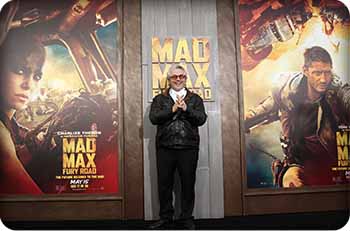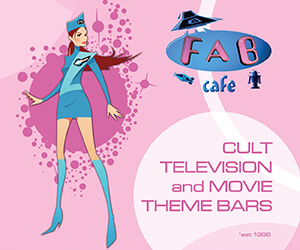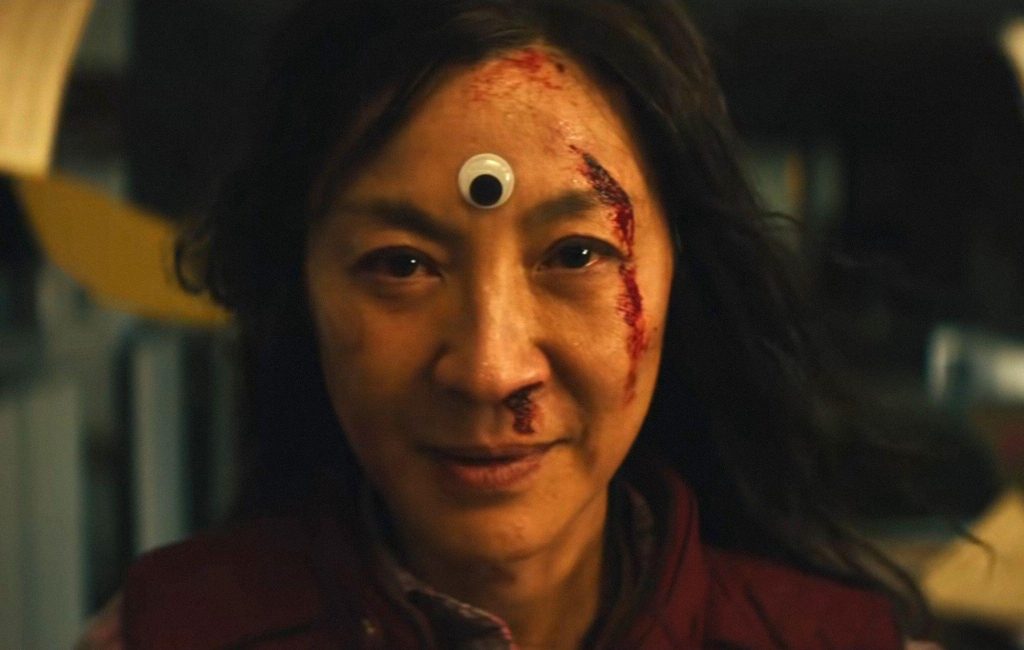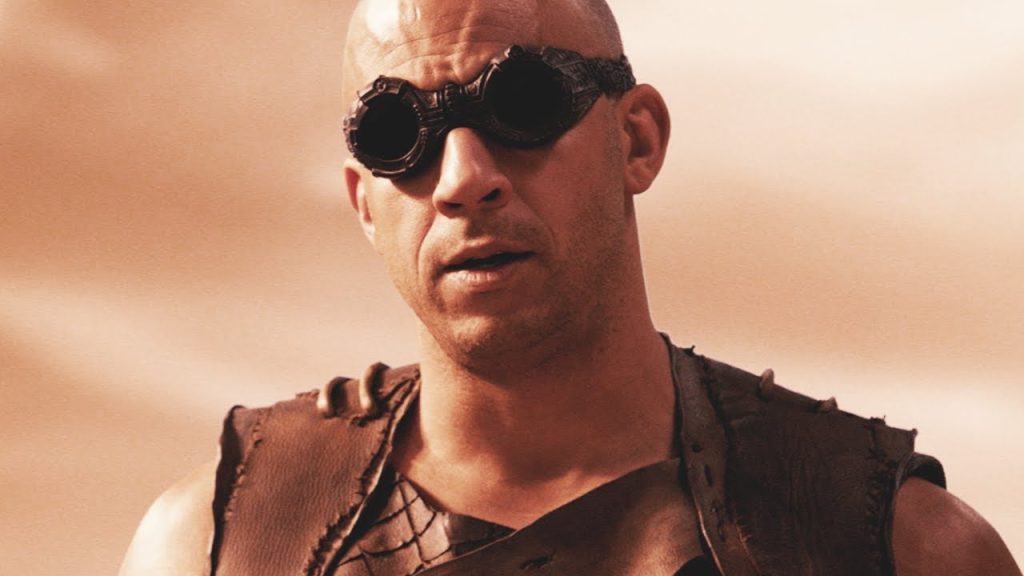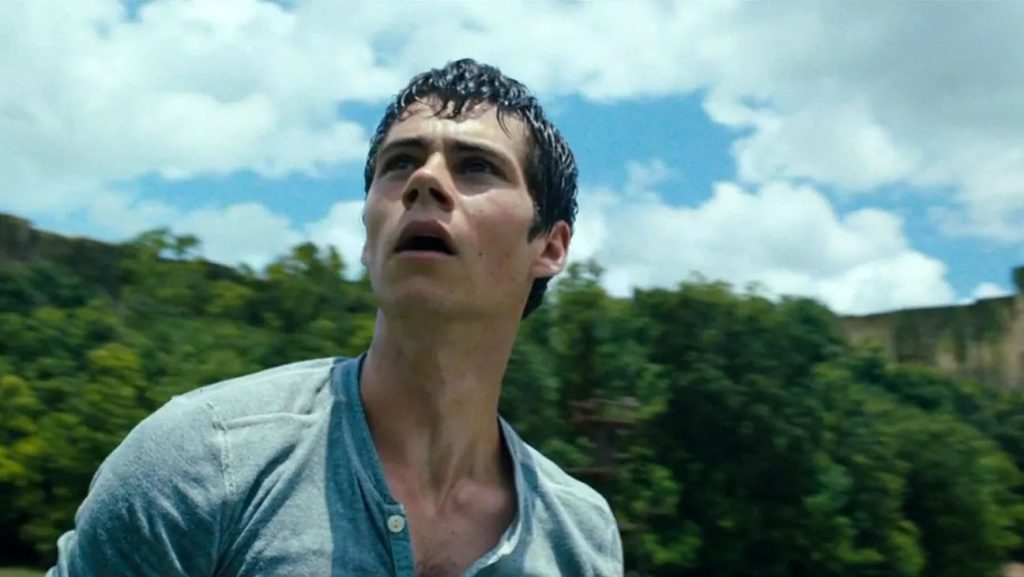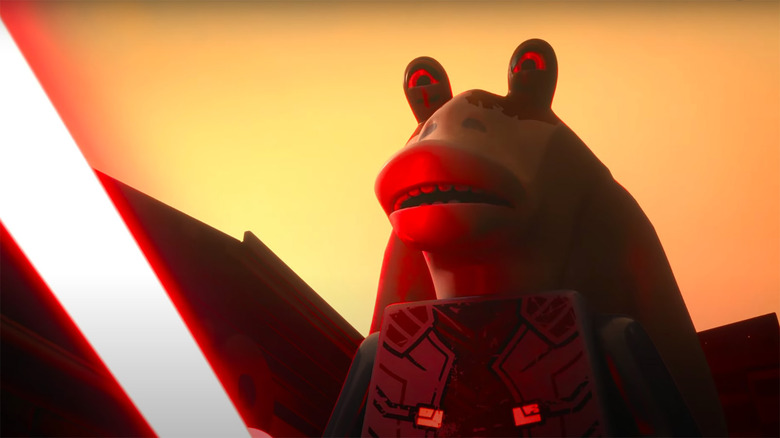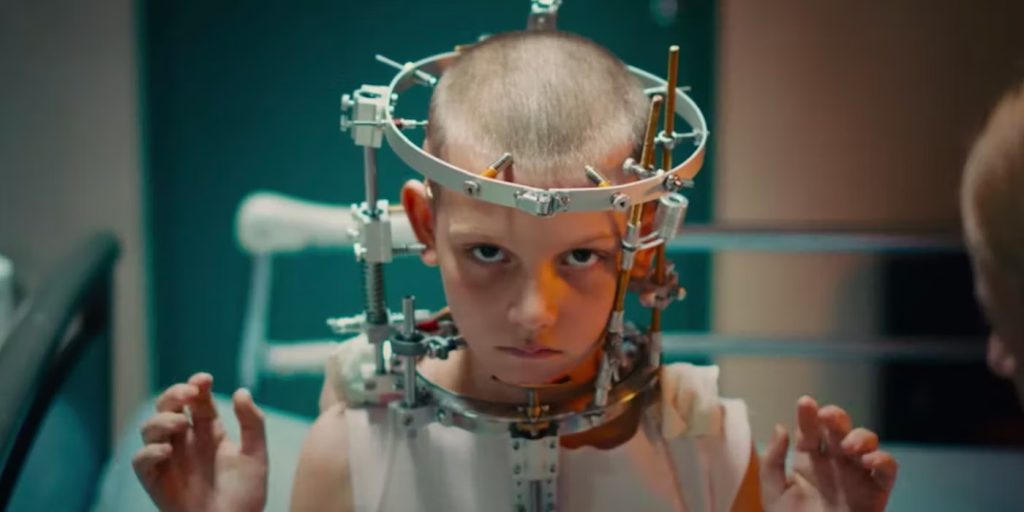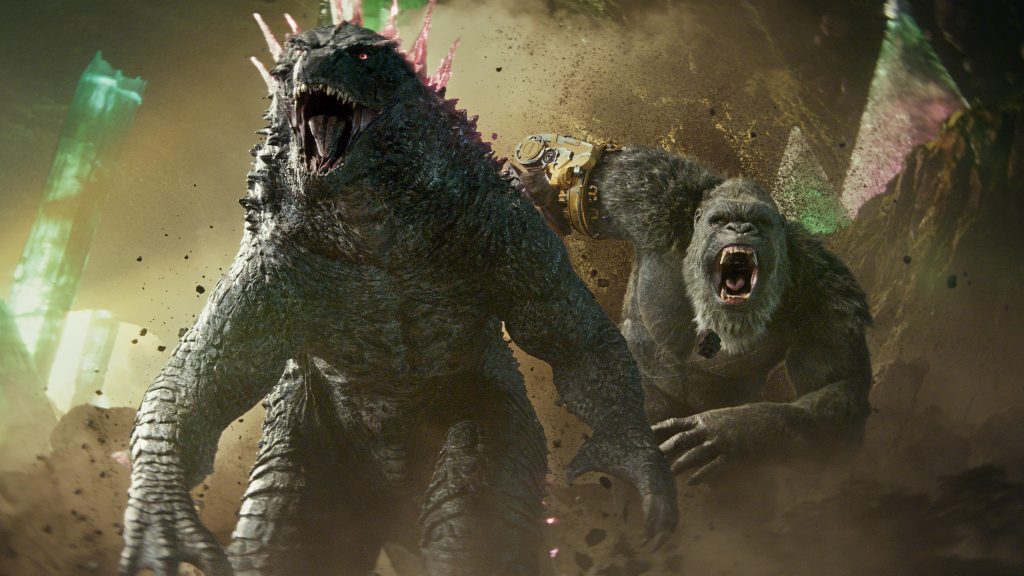
With MAD MAX: FURY ROAD finally released this week, we caught up with director/co-screenwriter/producer and all-around genre legend GEORGE MILLER to find out all about it…
STARBURST: On the earlier Mad Max films, you pioneered using real cars and real actors to orchestrate incredibly visceral action. What were the challenges for you to take that approach with a film on this scale, with gigantic armadas converging in the desert? Was it like conducting a war?
George Miller: The logistics are very similar to conducting a war. In fact, several of our crew and members of the stunt team had military experience, Special Forces and such. One of them, who plays a character in the film, had been to Iraq and Afghanistan. He said to me, ‘I don’t want to use the analogy of war, but this feels just like going on a mission. Instead of shooting people, you are shooting film.’ Obviously the human stakes are entirely different, but logistically, the mobility, feeding the troops, communications, keeping everybody safe, all of that has a lot in parallel with a military exercise, and this applies to any film you’re shooting on location.
Back when I made the first Mad Max, I was bewildered by the process because I had the film in my head and I had it on paper, but I was amazed that it just didn’t go my way. And I remember talking to Peter Weir, the Australian director, who had done two features by then. He said to me, ‘George, don’t you realize that making films is just like going on patrol in Vietnam? You’ve got your mission, you’ve got to get there, but you don’t know where the landmines are, you don’t know where the stray bullets are going to come from, and you’ve got to adjust.’ That’s the way that you get through it. The land mine might be the sun going out when you need it, or you’ve run out of time before you’ve got to a certain point. You’ve lost the location, or any one of those enormous, enormous things that can happen. So, by the time I got to my next film, which was Mad Max 2: The Road Warrior, I just treated it like come what may, you have to adapt and fulfill the mission.
So, the analogy holds up somewhat, and that’s what it was like on Fury Road. It was much bigger than anything we’d done before because almost all the film is outdoors. It’s a remote location, so we had to drive a long way and create all our own communications. You’ve got 50 vehicles in the same scene and probably 100 personnel – 100 stunt and cast, camera crew and even more in a shot – and all of those have to be in communication because the film must be shot on the move.
We also had the Edge Arm, which is a sophisticated and remarkable piece of machinery that was thrown into the middle of the dust and highly choreographed car action. It’s a car with a crane arm holding a camera, and both the movement of the crane and the focus and framing of the camera are operated via remote control. So, the camera could fly right down to within inches from the ground and soar up above the big trucks and big War Rig. That was pretty wild, and it was a major exercise.
To be honest, when you make movies, there are the talkie scenes and the action scenes. But this was all real world and old school action with real vehicles, every day for over 120 days. The biggest issue, by far, was safety. Riggers, stunt crew, everybody was just obsessed with safety. But we had no broken bones or serious injuries to speak of, so it worked out great.

With green screen and visual effects composites being so ubiquitous these days, why is it for you more important to do it for real?
It’s the film. That’s how the Mad Max films started, and if it became a CGI movie, it wouldn’t feel like a Mad Max movie.
One of the big complaints with green screen is that people are working against tennis balls on a stick when you’re dealing with a monster, and that’s very difficult for an actor. But getting out there, getting dust in your eyes, feeling the heat of the sun and the cold of the desert in the mornings and at night—it’s a much more immersive experience. To take everybody out into the Wasteland and put them in those circumstances made the behavior more authentic because they had something to work against.
The most important thing is that this is not a fantasy film. There’s nowhere you can go to fly a space vehicle and have many roadblocks coming at you. In the case of Fury Road, it’s tied to the earth. Why do a CG car crash when you’ll miss all the randomness of detail that happens when two cars collide? The way the dust behaves, the way the metal tears off… Why not do it for real?
All those things, plus the landscape, conspired for us to go out to Namibia. We needed a Wasteland where there was literally no vegetation, and in Namibia, there is some here and there. So, we were able to use CG to adjust where we couldn’t find exactly what we needed or to erase the tracks in the sand after the first take if we were driving across the desert. The rest of it was all real world, and I think a lot of it seeps onto the screen.

We wanted to also ask you about the vehicles, like the War Rig and the Doof Wagon, and the different personalities that they have. Where did they come from and what were your ideas about them?
The vehicles all had to arrive out of the backstory, and as much as we could, we just had to follow a logic. We’re 45 years after the fall of the world, so the cars that survive would be the more robust vehicles – the muscle cars and the hot rods that we saw from earlier periods. The engines would be the more classic, not those with microprocessors or the more advanced technology. If anything broke down, you couldn’t go and get a new computer chip or if the metal crumbled, you couldn’t put it together again. Also, people aren’t concerned with the aerodynamics; they’re concerned with a kind of aesthetic. So, a steering wheel becomes an artifact with religious significance to them in this world.
In the case of the War Rig, the characters spend so much time in it that it is indeed another character in the movie. It’s a distinct presence, so we spent a huge amount of time working on the way that would look, and every piece had to have a logic. It’s obviously a tanker, with a hybrid of engines on the cabin. They can’t go to the local body shop and get another paint job, so they cover it in tar and pitch. They put spikes and skeletons on it to give it a sense of dread and warn anyone who would want to attack it. There are armed War Boys on top of it to protect it, like seamen protecting a ship. It belongs to the warlord, so the tin roof above has got his imprint on it. It’s all personalised and very detailed, and all of those things had to come out of the story. It didn’t come off just a cool drawing.
In terms of the Doof Wagon, going into war, people always use music as a way to energise the troops, and now we’re going into war with an armada of vehicles. So, what would rise above all that noise but a traveling rock concert? It has to be loud enough for everybody in their vehicles to hear, so it has huge speakers. It carries a rock guitarist, the Doof Warrior, with a double neck guitar that is also a flamethrower. And the wilder it is, the more formidable they are and the more efficient the armada is militarily because people are scared off.
There is a fuel tanker, run by the People Eater, who’s from what others refer to as Gas Town. Gas Town is obviously full of gas, but the People Eater is also the bean counter for the Immortan, so his fuel tanker is a Mercedes stretch limousine. And if he’s got one of those, he might as well decorate it, and has festooned the front with just about every fancy truck or car grill he can find. So, again, it arises out of character.
The Gigahorse is the Immortan’s car, and because he’s the warlord of the Wasteland, he needs the fanciest vehicle. Instead of one Cadillac, it’s kind of a Cadillac on steroids—it’s a double Cadillac. The V8 has a cult significance to this world, so for the Immortan, they put two V8s together to make an actual V16 for the Gigahorse.

What about the iconic Mad Max Interceptor, which has its own journey in this movie?
In the westerns, the cowboys had their favorite horse, and Max has his Interceptor. When we see it at the beginning, it’s pretty clapped out, as they say. But it’s scavenged to the Citadel where they have the resources to restore it big time in their own fashion, and it comes back into the story. Like Max, the Interceptor keeps getting wrecked and resurrected.
In the midst of the nonstop action in the Mad Max movies are provocative ideas with contemporary resonances. Were there ideas or themes you wanted to weave into Fury Road?
I’ll just say that I hope this story has a lot of resonances for people, not only from the modern world, but what is constant in human history – how we behave to each other in dark and destructive ways, and also where we show each other honor and love.
When we made the Babe movies years ago, there was a scene in which the farmer looks through the window and notices that he’s separated the brown chickens from the white chickens. It was just a way to show that he had some concern for the animals. But when I went to South Africa, a gentleman said to me that Babe is about apartheid. It never was the intention, but, of course, this was just as South Africa was coming out of apartheid, so it made perfect sense through the eyes of a South African. That’s the nature of stories, I believe.
I have to quote Freddie Mercury – and I hope I get this right – when someone asked him about his interpretation of Bohemian Rhapsody, Freddie Mercury said, ‘If you see it in there, dear, it’s there.’ In other words, the song is in the eye of the beholder. It’s for each member of the audience to find its resonance. I live there, because that’s what allegory is. The hope is that people will make their own connections and that the film will have some meaning for them.
MAD MAX: FURY ROAD hits UK cinema screens on Thursday, May 14th.

